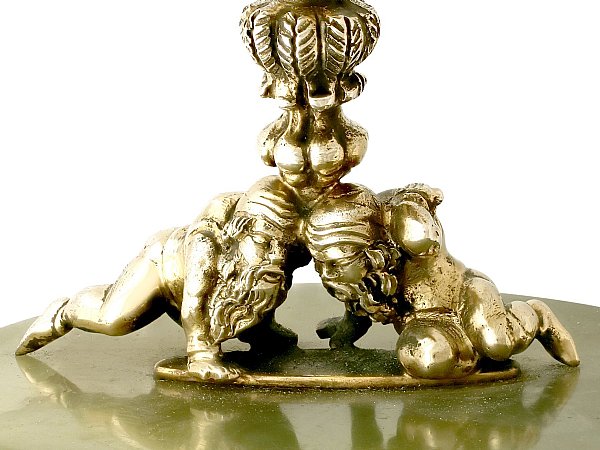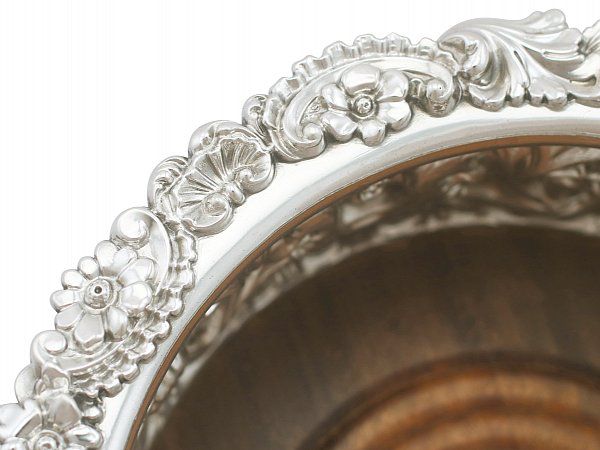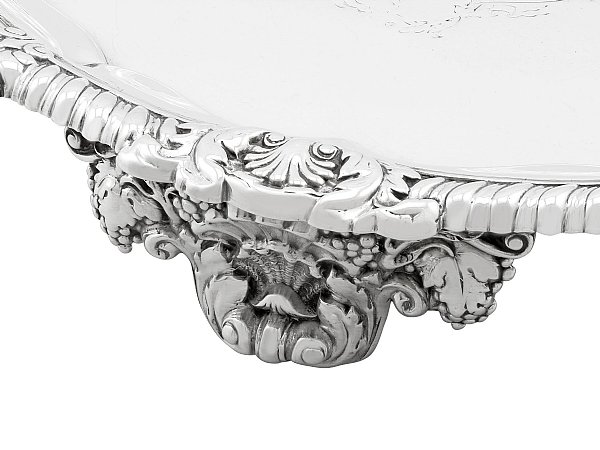Regency Style Silver
The Regency style (1811 to 1830) found its popularity during the life of Napoleon, and became the English equivalent to the popular French Empire style. Both were heavily influenced by Ancient Greek and Roman styles. Napoleon's actions in North Africa impacted the Egyptian revival, and Ancient Egyptian styles were also influential in this time. Regency style decorative arts were produced during the regency of George, Prince of Wales, and during his entire reign as King George IV of England, ending in 1830. The major source of inspiration for Regency taste was found in Greek and Roman antiquity, from which designers borrowed both structural and ornamental elements. In the Regency style's early phases, English silversmiths created faithful copies of the French designs; however they were not met with open arms. Considered too formal for the English tastes, a new form was forced to evolve over time that was better suited to its audience.
Regency Style Silver
Prominent English silversmiths like Paul Storr made significant contributions towards the forming of the Regency style. Spotting Regency pieces is best done by looking for these key popular ornamentations – frequently found on Regency silver. There are: lyres, lotus blossoms, winged busts, lion’s feet, garlands, fluting, beaded borders, horns of plenty, human heads, faces, and leaves. Furthermore, heroic themes can be spotted across pieces made in this style.
There was a huge variety of themes involved in the Regency style. It incorporated a lot from Ancient Roman pieces, mostly made out of bronze and pottery themselves. A lot of silverware at this time was created to memorialise and commemorate naval and military victories in Britain, which modified some of the specific styles as well. The most powerful nation in the world at the time, Britain’s landed classes were growing and prospering with the increase in rent costs.
The Regency style is all but dominated by one maker, Paul Storr. Storr’s popularity even at the time led him to basically be forced into being the head of a large factory, as he had garnered such a workload. Craftsmanship standards were still incredibly high from all of Storr’s items, making them a solid investment even today.
Beyond Paul Storr, there is a plethora of valued silversmiths from the Regency period whose pieces have maintained significant value over the last two centuries. George Burrows II, Charles Thomas Fox, and Thomas and John Settle are among the finest craftsmen of their period, with pieces that are still in excellent condition. The Fox family, from which came Charles Thomas Fox, was a prominent family of silversmiths based in London in the 1800s. The Foxes were not apprenticed or freemans at the Goldsmiths Company, adding further acclaim to their true skill in craftsmanship. For more than 100 years, the Fox family business was passed from generation to generation, never forgetting its roots in the Regency period.
The style of Regency silver was replicated for a long time after the period itself ended. Many items from the later 19th century especially can be seen to be imitating the Regency style.





